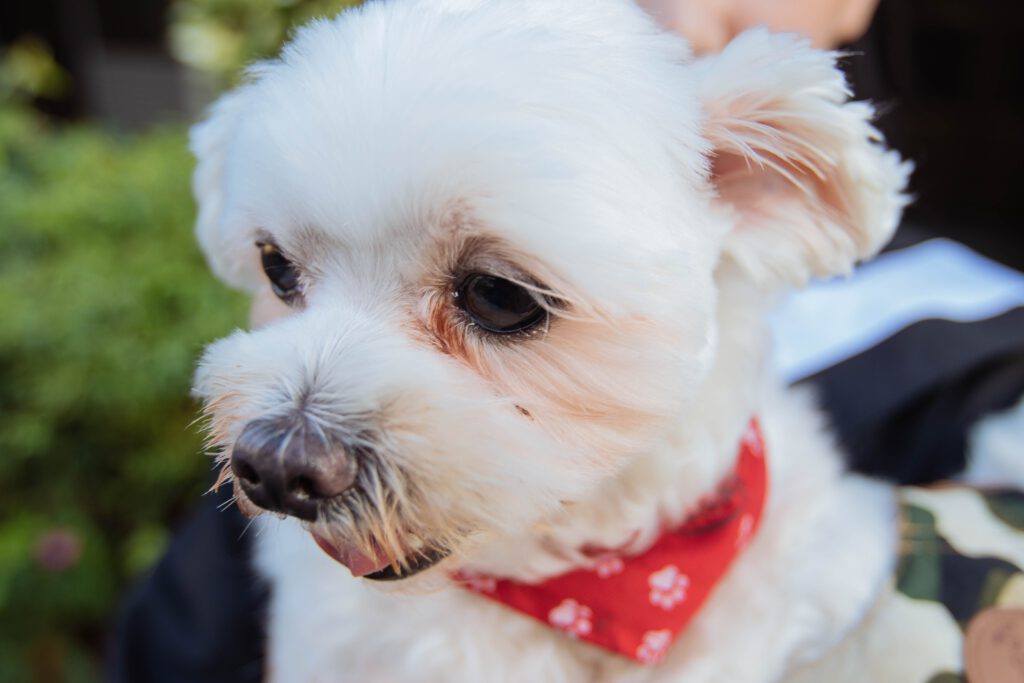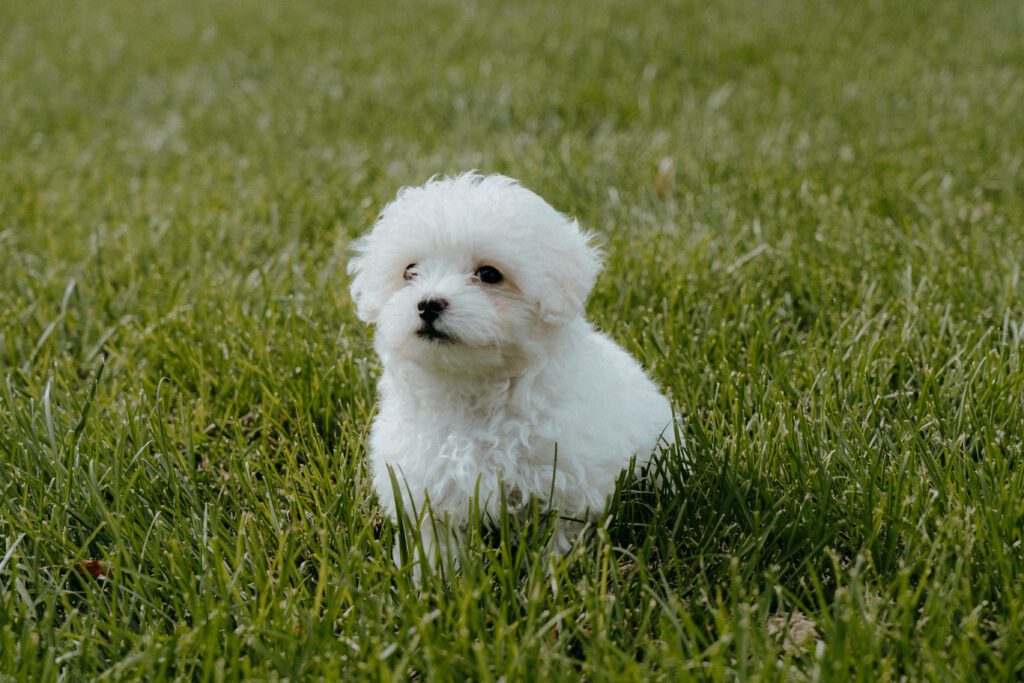
If the fur on your Maltese dog’s face is white or very light-colored, you may occasionally notice brown streaks below the eyes. These are called “tear stains”.
They certainly look strange, but do these stains indicate a medical problem? And is there anything you can do to get rid of them? In this article, we’ll show you how to remove tear stains from your Maltese and answer some common questions.
What causes brown tear stains in dogs?
As a dog’s red blood cells are broken down, they produce iron-carrying molecules called porphyrins. When your dog’s eyes water, the porphyrins in the tears mix with the fur and trigger a chemical reaction that causes the discoloration.
All dogs are susceptible to tear stains, but the stains are most visible on Maltese and other light-colored dogs due to the color contrast.
Are dog tear stains normal?
Tear stains themselves are common and harmless. However, they could indicate an underlying medical problem.
Here are some conditions that may cause tear stains.
- Yeast infection
- Fungal infection
- Malformed tear duct system
- Eye irritation
- Entropion, a condition where the eyelid curves inward so that the hair and skin irritate the eye. The Maltese breed is especially susceptible to this.
- Abnormal eyelash growth
- Glaucoma
- Scratched or infected cornea
Before attempting to treat and clean tear stains on your own, consult with a veterinarian to rule out any underlying health issues.
Is tear stain remover safe?
Tear stain removal products come in several varieties: wipes, liquid soaps, even edible supplements. Many of these are derived from natural ingredients and are perfectly safe when used correctly. However, others are unsafe and should never be used.
For a safe over-the-counter tear stain remover, you may consider TropiClean Spa Tear Stain Cleaner. This product is full of all-natural ingredients: water, vanilla, blueberry, kiwi, oatmeal, white tea, and ginger. According to the instructions, just keep it out of your dog’s eyes and it should be safe.
Another safe option is Eye Envy Liquid Tear Stain Remover. It contains water, witch hazel, boric acid, and colloidal silver, all of which are OK to use near a dog’s eyes.
You should never use any tear stain remover that contains bleach, hydrogen peroxide, or the antibiotic tylosin tartrate. These options may be effective but they carry the risk of pain and injury.
How can I get rid of my dog’s tear stains naturally?
If you normally give your dog tap water, try switching to filtered water. Believe it or not, many Maltese owners have reported that this change can reduce or even eliminate tear stains.
You should also be vigilant about your pup’s hygiene. Keep the hair on the face trimmed short. Clean and dry your dog’s face throughout the day if you are able.
Chewable supplements with all-natural ingredients can also help tear stains. For Maltese dogs, we like Zesty Paws Tear Stain Bites. Small dogs should only need one soft chew per day. Zesty Paws has vitamins and minerals for eye health and antioxidants to support the immune system.

Are tear stains permanent?
Tear stains can be stubborn and frustrating to clean, but don’t give up hope! The key is to try different methods until you find one that works. Start by switching from tap water to filtered water. If that doesn’t work, change your dog’s diet and focus on keeping his face clean and dry. After that, you may want to try safe over-the-counter remedies.
Does apple cider vinegar help dog tear stains?
The use of apple cider vinegar for tear stains is fairly controversial. Some dog owners add a few drops to their dog’s water or food to change the pH balance. Others dilute the vinegar with water and apply it topically.
Consult with your vet before attempting these remedies. Apple cider vinegar can severely irritate a dog’s eye, especially if it is not sufficiently diluted. And altering the pH levels of your Maltese dog’s food and water may have unintended side effects on your pup’s bladder or kidneys.
Does coconut oil help tear stains on dogs?
Coconut oil can be an effective remedy for tear stains if used correctly. You should use unrefined, organic coconut oil. Other types may contain chemicals or pesticides.
First wash your hands and dry your dog’s face with a clean towel. Then apply a small amount of the coconut oil to the tear-stained areas under your dog’s eyes. The oil is bacteria-resistant and will help shield your dog’s fur from the tears.
Does yogurt help dog tear stains?
If your dog’s tear stains are related to a yeast infection, yogurt may help. Some varieties such as Greek yogurt contain probiotics which are known to kill yeast. After consulting with your vet, try feeding your dog a small amount of yogurt each day. You may want to start as low as a half teaspoon to ensure that the yogurt does not cause health problems.
Does distilled water help dog tear stains?
Many types of water, including tap water, contain minerals that contribute to your dog’s tear stains. When water is distilled, it has been vaporized and recollected in a separate container. This purification process removes minerals and impurities. Using distilled water is a safe, natural and effective way to treat tear stains.
What is the best dog food for Maltese tear stains?
Any food that promotes healthy eyes and coat is best for reducing tear stains. Nutrients such as quercetin, lutein, and astaxanthin will help regulate your Maltese dog’s histamine levels and prevent excessive watering. Fish oil has Omega-3 fatty acids, which are great for maintaining a healthy, shiny coat. This is important because cleaning tear stains may require you to frequently clean, comb and dry the hair around the eyes.
There are many options available, but we recommend Halo Holistic Chicken & Chicken Liver Adult Dry Dog Food. The kibble is a good size for small-breed dogs such as Maltese. It’s also rich in fish oil and vitamins.

Conclusion
Tear stains can be a difficult problem to solve, especially for Maltese dogs with a beautiful white coat. Luckily, there are many safe and effective remedies. We have described many treatments in this article, but if you are still struggling with your dog’s tear stains, your veterinarian should be able to help.